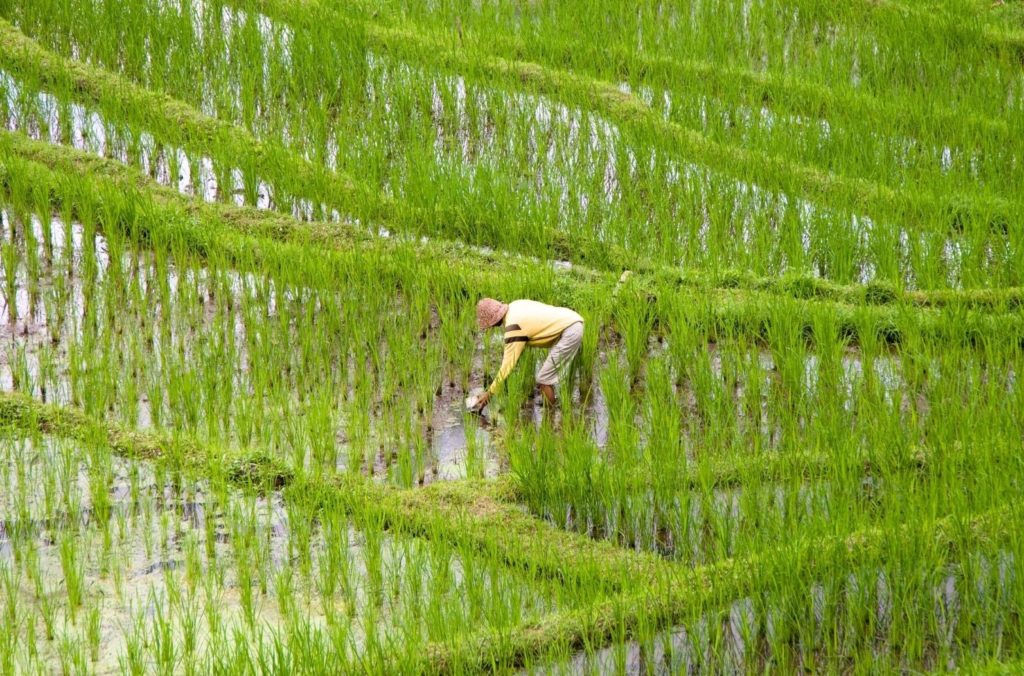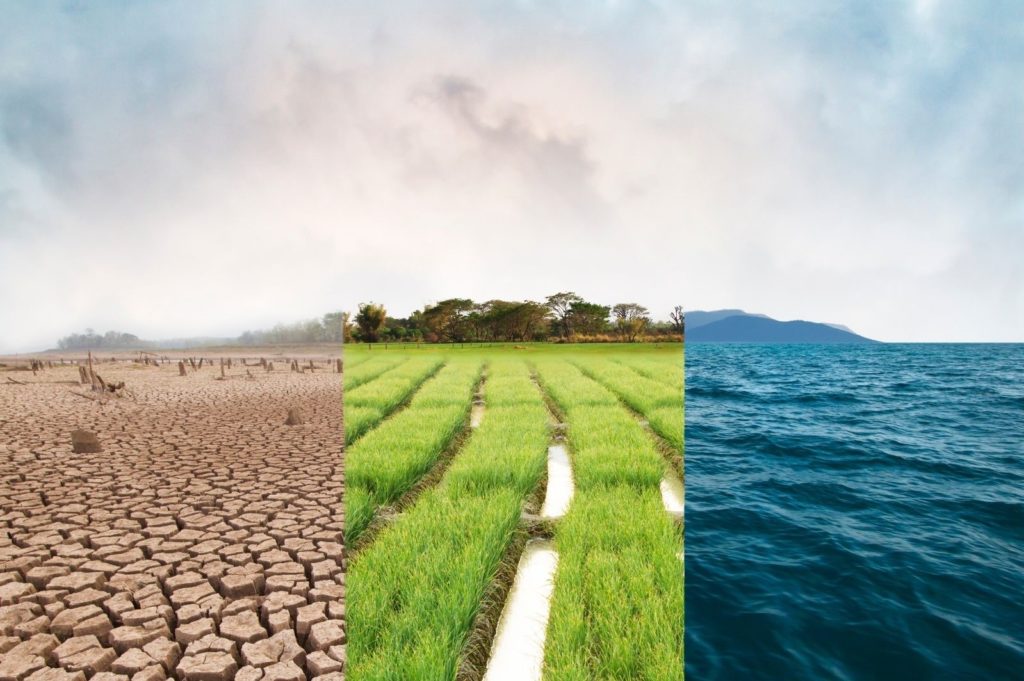Agriculture is considered a potential sector for economic growth and food security in Cambodia, with about 65% of the population dependent on this sector, including fishing and non-timber forest products[1]. At the same time, Cambodia is considered a country vulnerable to climate change, which is predicted to be affected by changes in temperature and precipitation. These changes will adversely affect the agricultural activities of the people and the environment, requiring appropriate and effective solutions from relevant parties.

The impact of climate change on agriculture in Cambodia
The agriculture sector is extremely vulnerable to the increase in temperatures, change in rainfall pattern, extreme weather events such as cyclones, drought and flooding as well as sea-level rise in coastal areas[2].
- Drought: drought often happens because of global warming that has caused an increased in temperature and the lack of rainfall[3]. Increasing in temperature is a problem that led to dry condition and decrease in crop production, leaving negative impacts on human, animals and particularly agriculture sector and food security. From 2009 to 2013 Cambodia has suffered from drought annually, affecting around 7.8 million people. In 2015 and 2016 Cambodia experienced drought linked to the effect of the El Nino climate cycle which decreased rainfall and increased heat; it negatively affected rice yields and irrigation demand. In the same years the effect caused harm to 2.5 million people and 235,000 hectares of land. In 2018 drought affected about 20,000 hectares of rice fields and 19,000 hectares of land[4].
- Rising sea level: The sea level is estimated to increase from 16cm by 2030 up to 45cm by 2070[5]. The rapid rise causes saline intrusion of drinking water and fresh water ecosystem, invade costal area and reduce agricultural land.
- Flood: Cambodia experienced the worst floods so many times, negatively impacting people and rice. In 2011, about 13% of Cambodia’s rice crop has been flooded and half of that was destroyed[6]. In 2013 Cambodia experienced heavy flooding along the Mekong River and throughout the north and the west; the flood killed 188 and displaced 1.7 million people. More than 1,000 schools were completely destroyed, roughly 1,500 miles of roads were washed away, and over 200,000 to 244,000 hectares of rice fields were lost.[7]
Sustainable Agriculture Contributes to Climate Change Mitigation

Agriculture sector is the second highest emitters of Greenhouse Gases after the land use change and forestry (47.6%); it contributes 36.4% of the Cambodia’s total emission in 2013, according to the World Resources Institute Climate Analysis Indicator Tools (WRI CAIT) driven by rice cultivation and enteric fermentation from livestock[8]. Agriculture sector could play a significant role in climate change mitigation by transitioning from conventional farming to sustainable farming. The transition is a viable option for improving the quality of the environment. There are some practices in agriculture sector that could help in climate change mitigation including:
- Reducing logging; farming demands land, so farmer often trade forest for fields. To solve this, is to limit logging while still producing enough crop to feed growing population.
- Rice paddies are the key source of methane, to clamp down this, is to keep the fields dry
- Using slow-release fertilizer to prevent unnecessary emission
- Reducing food waste and shifting toward diets with less meat, both of which would require fewer greenhouse gas emission from agricultural activities.
 Sources: WRI CAIT,2017; FAOSTAT (2017)[/caption]
Sources: WRI CAIT,2017; FAOSTAT (2017)[/caption]
Joint Effort Between the government and Non-governmental Organization
Due to an increase in public interest in sustainability and additional opportunities for implementation of sustainable practices, government and non-governmental organizations are working together in order to have furthered sustainable agricultural initiatives and climate change response and integration of climate issue. However, there are relatively few policies and enforcing law and regulations that focus exclusively on sustainability and improve climate condition. Below are a few national plans and framework in line with climate change in Cambodia.

- Cambodia Climate Change Strategic Plan 2014-2023
- Climate Change Action plan 2016-2018
- Climate Change Strategic Plan for Disaster Management Sector, 2013
- Climate Change Financing Framework, 2015
The impact of climate change on agriculture is a serious issue that needs both the government and non-governmental organization to collaborate to find suitable solutions to mitigate the impacts especially on rural farmers. The two sectors may also work together closely to make agriculture more sustainable.
Reference:
[1] https://www.usaid.gov/cambodia/agriculture-and-food-security
[2] https://www.climatelinks.org/sites/default/files/asset/document/2019_USAID_Cambodia%20CRP.pdf
[3] https://www.pic.org.kh/images/2019Research/20191014_Overview%20of%20the%20Impact%20of%20Drought%20on%20Rural%20Farmers%20in%20Cambodia%20.pdf
[4] https://www.pic.org.kh/images/2019Research/20191014_Overview%20of%20the%20Impact%20of%20Drought%20on%20Rural%20Farmers%20in%20Cambodia%20.pdf
[5] https://www.adb.org/sites/default/files/linked-documents/48409-002-cra.pdf
[6] https://www.danchurchaid.org/articles/cambodia-s-worst-floods-in-a-decade
[7] https://reliefweb.int/report/cambodia/2013-cambodia-floods-one-year-report-building-capacity-community-leaders-distribute
[8]https://www.climatelinks.org/sites/default/files/asset/document/2017_USAID_GHG%20Emissions%20Factsheet_Cambodia.pdf
 Blog post by:
Blog post by:
Mana Son
Associate, CPSA

